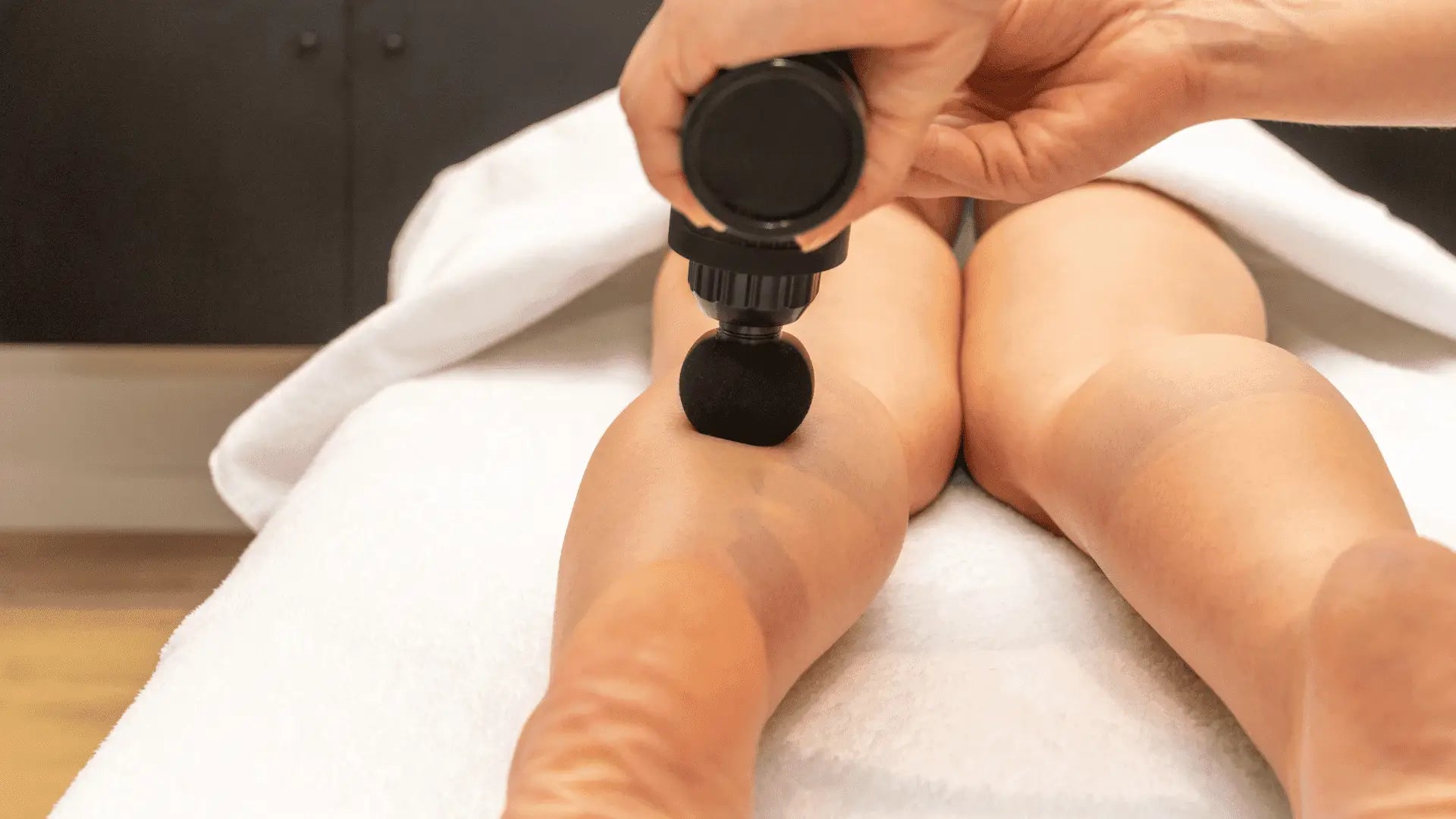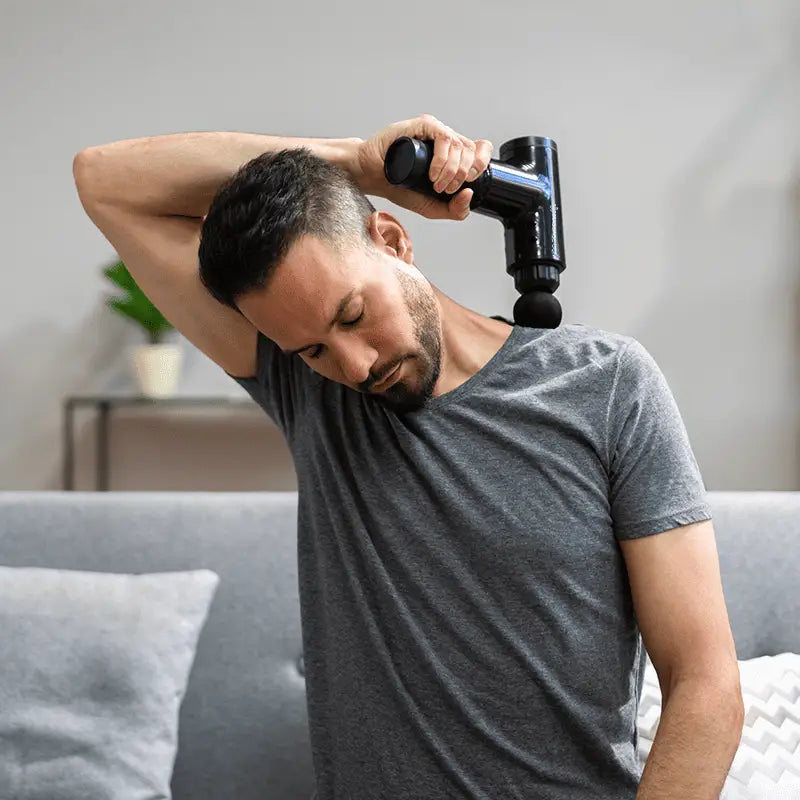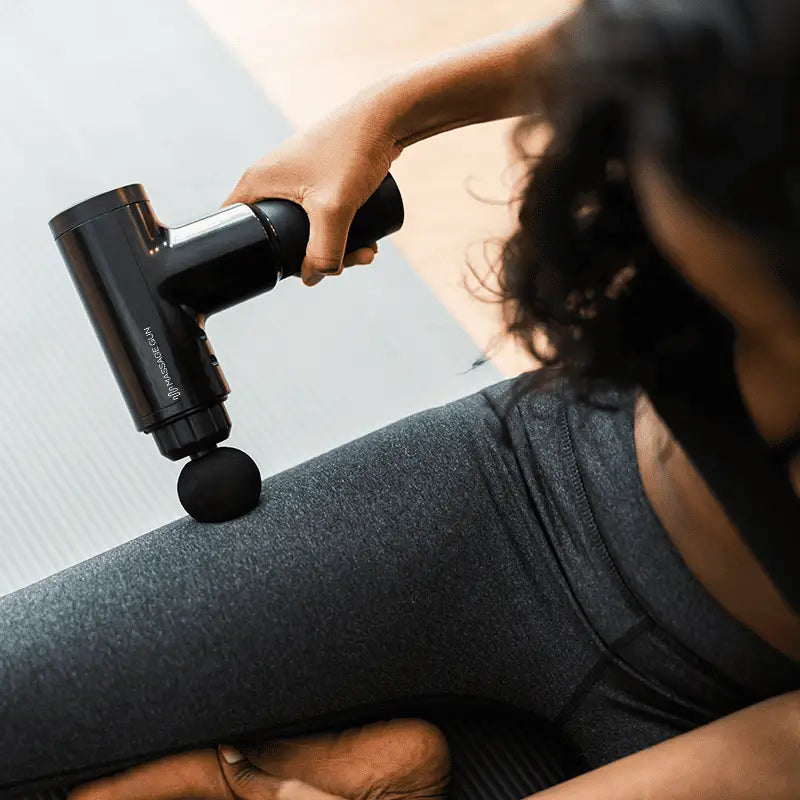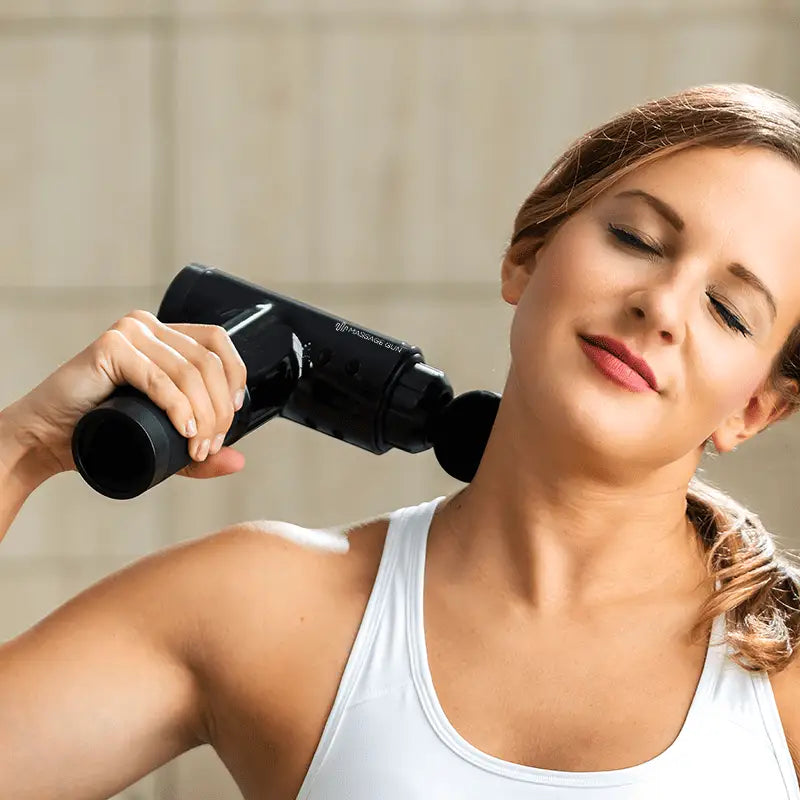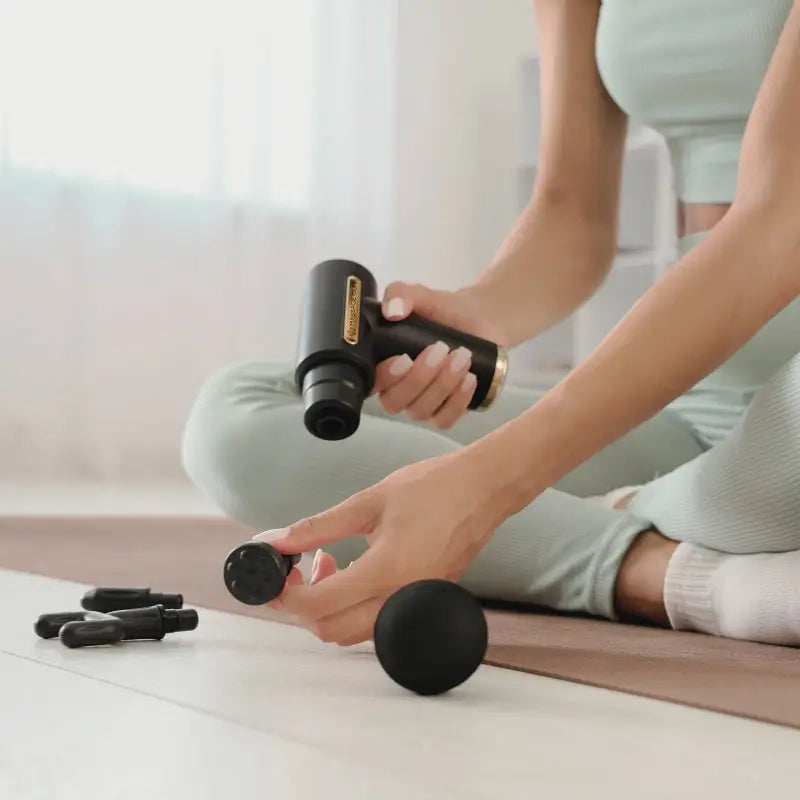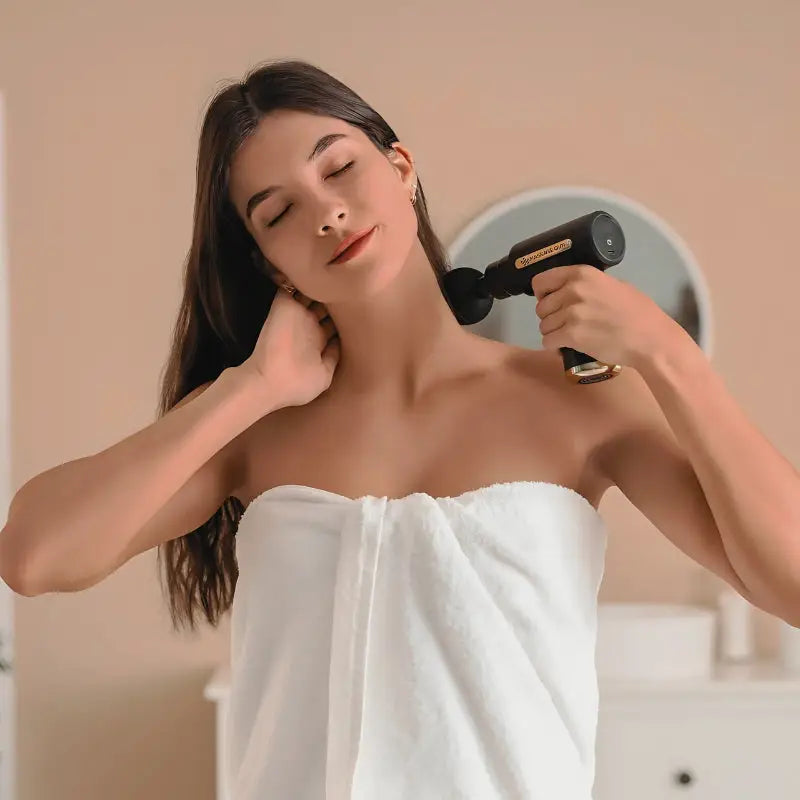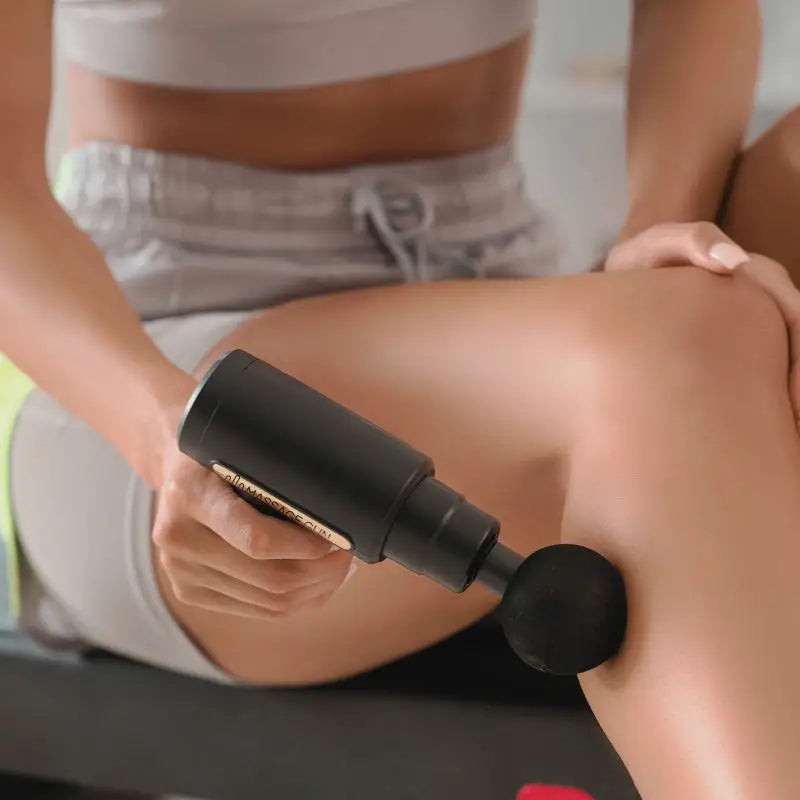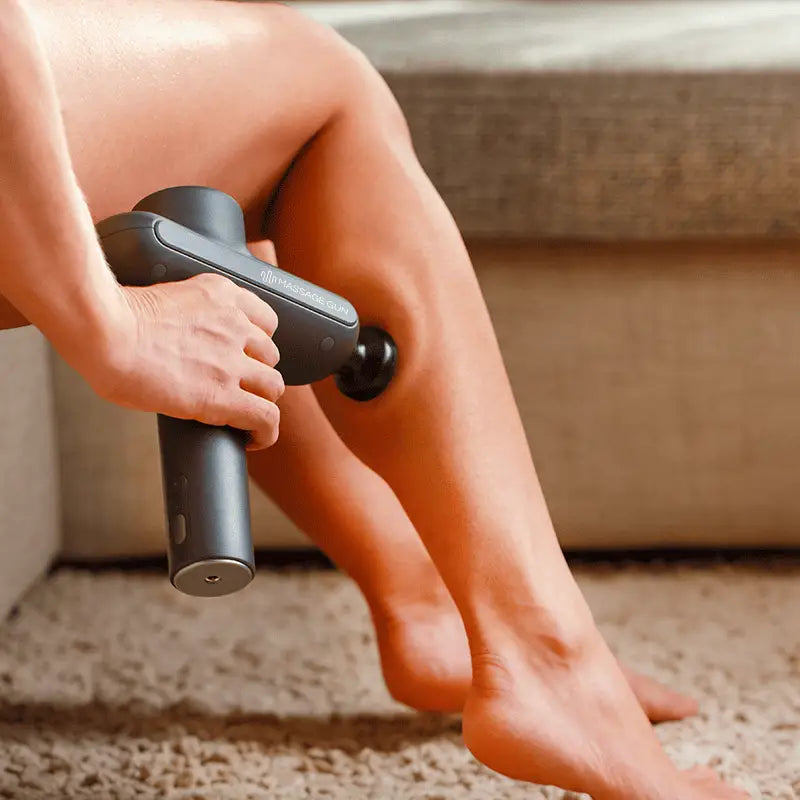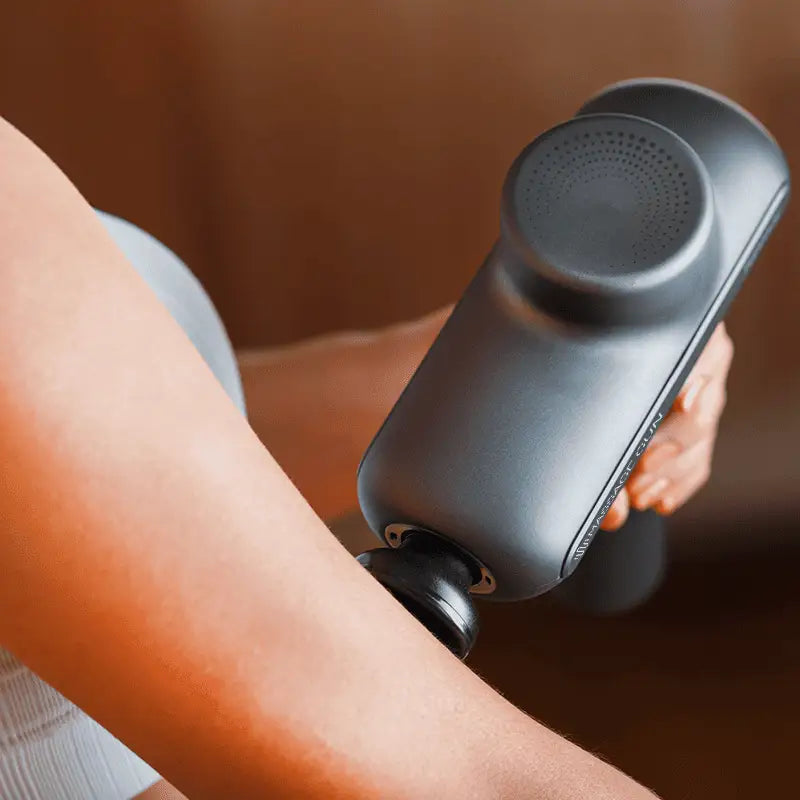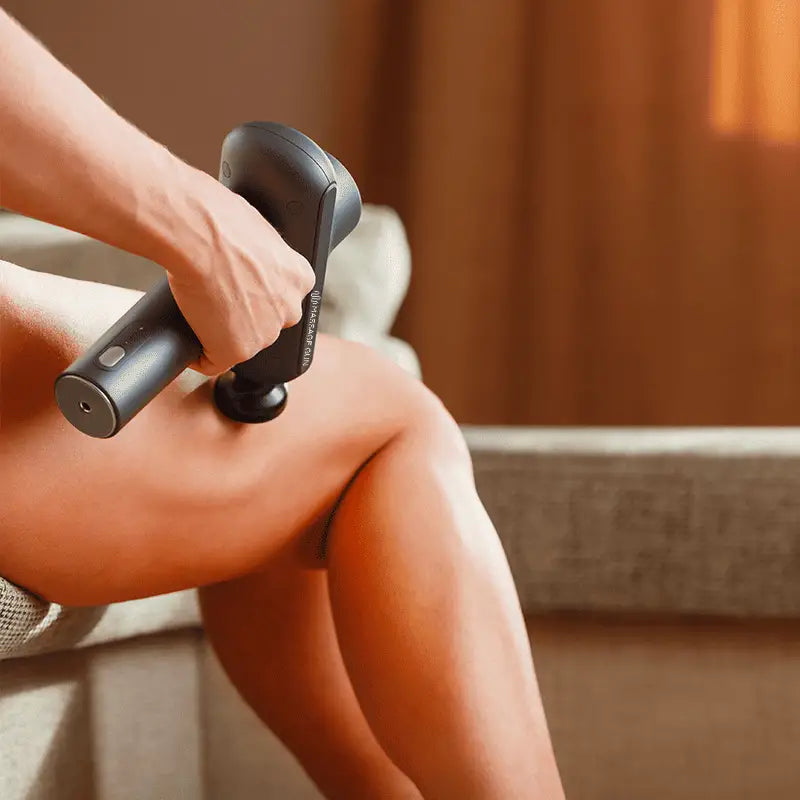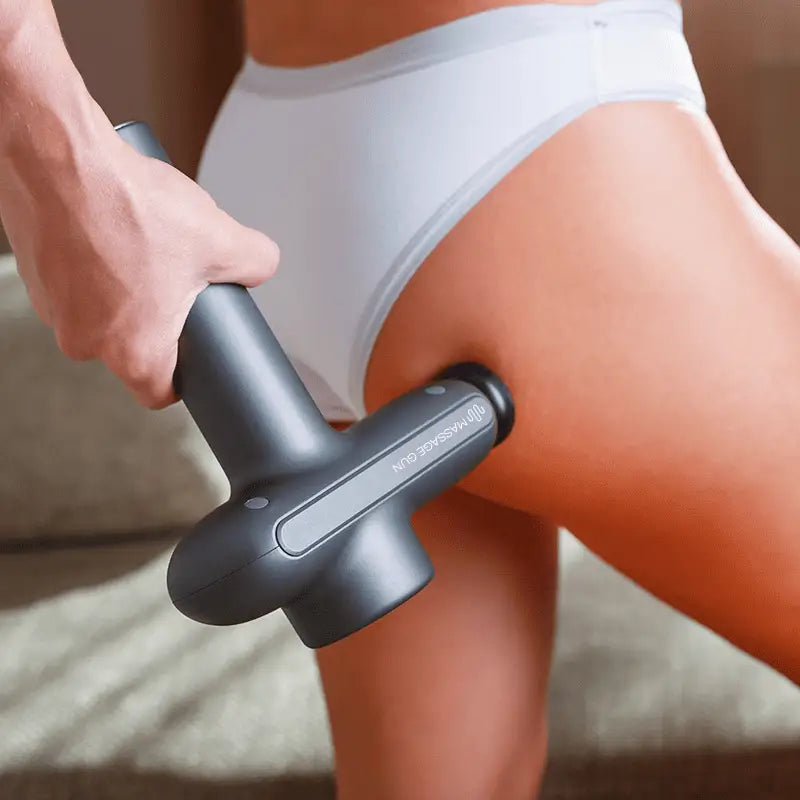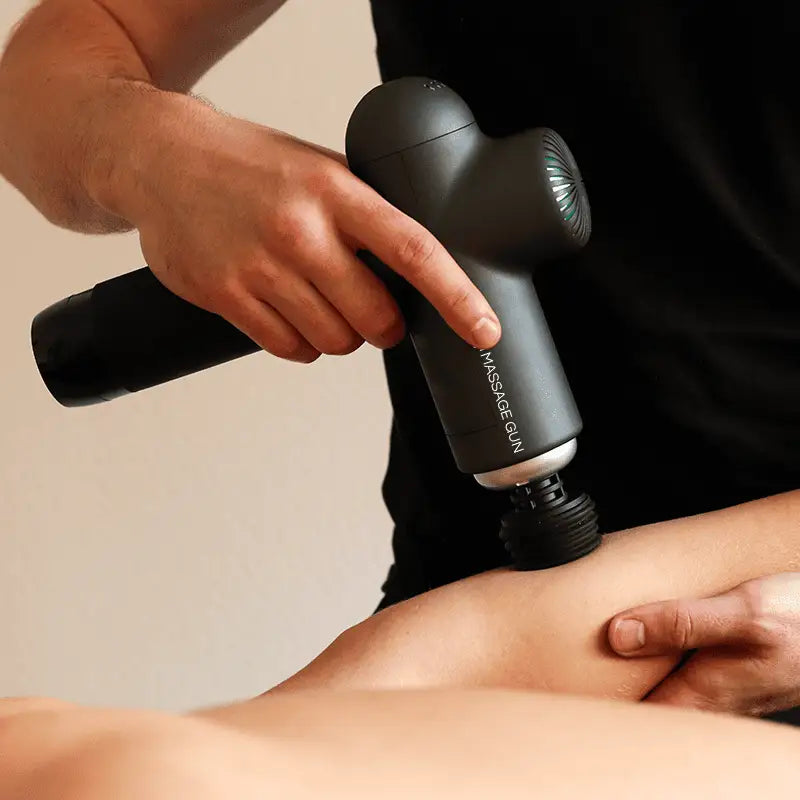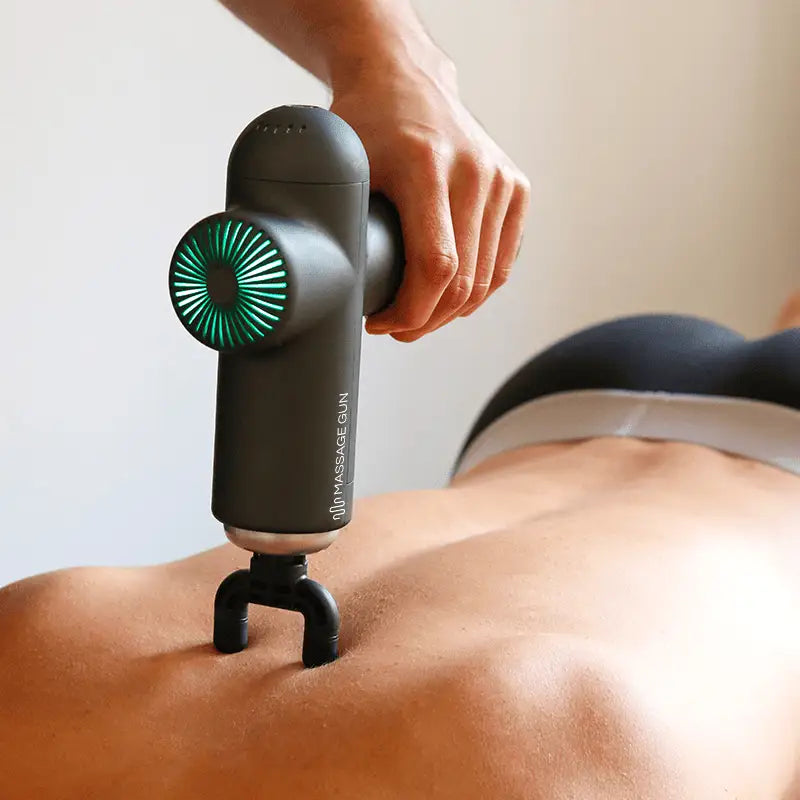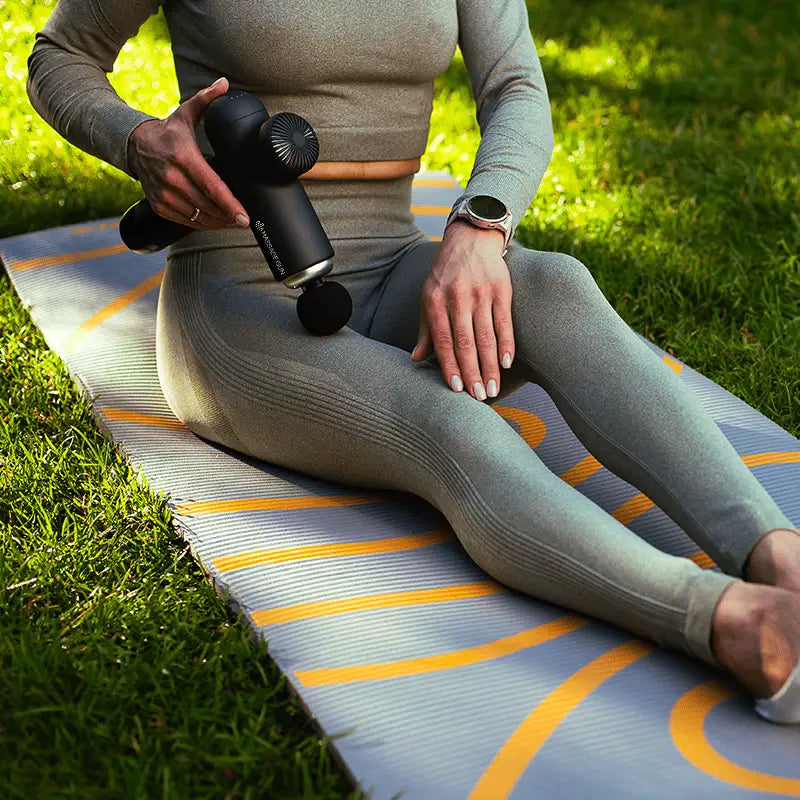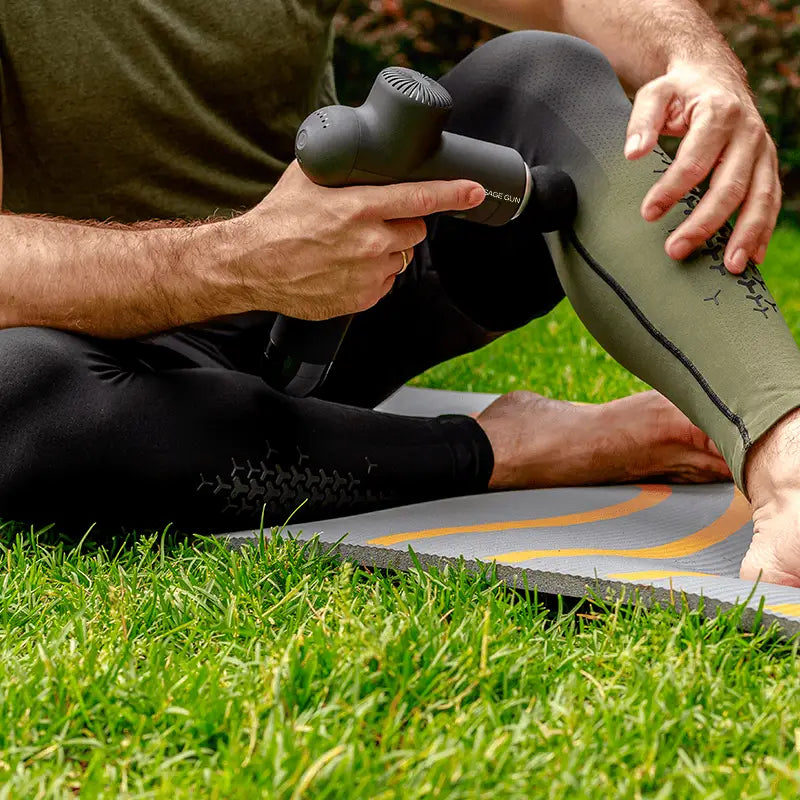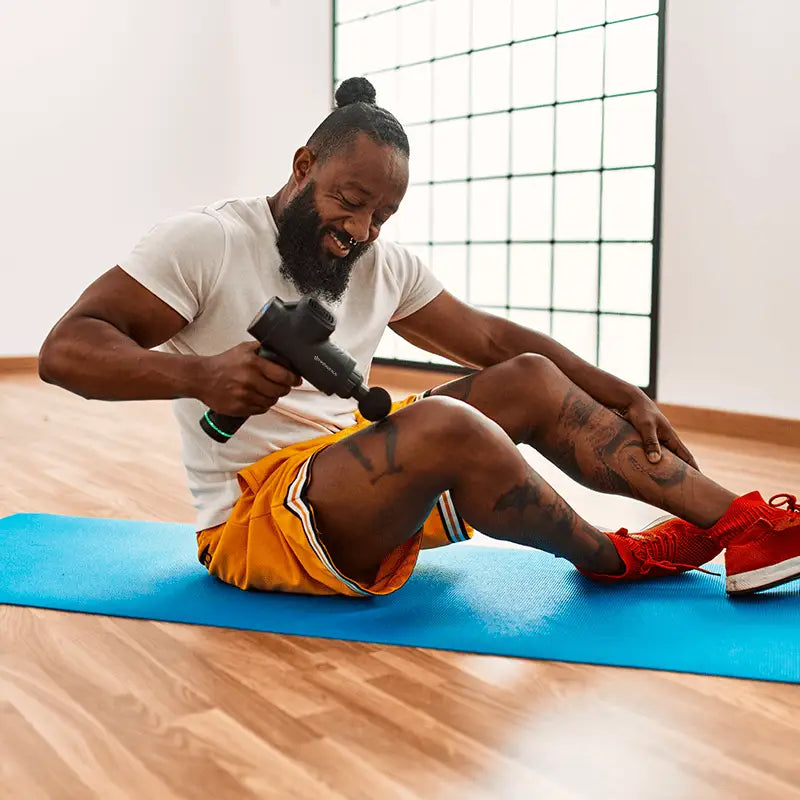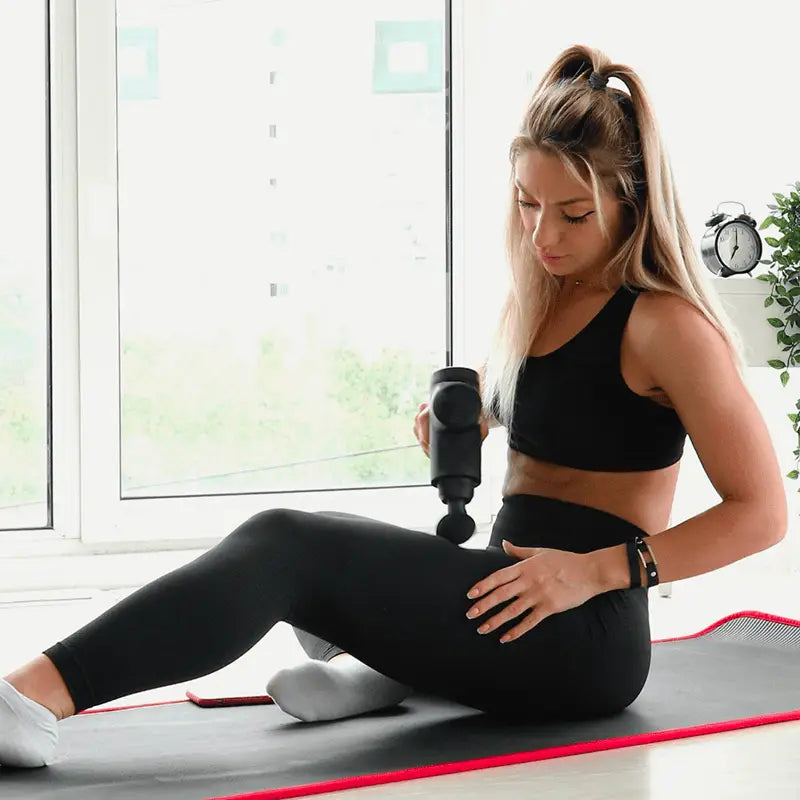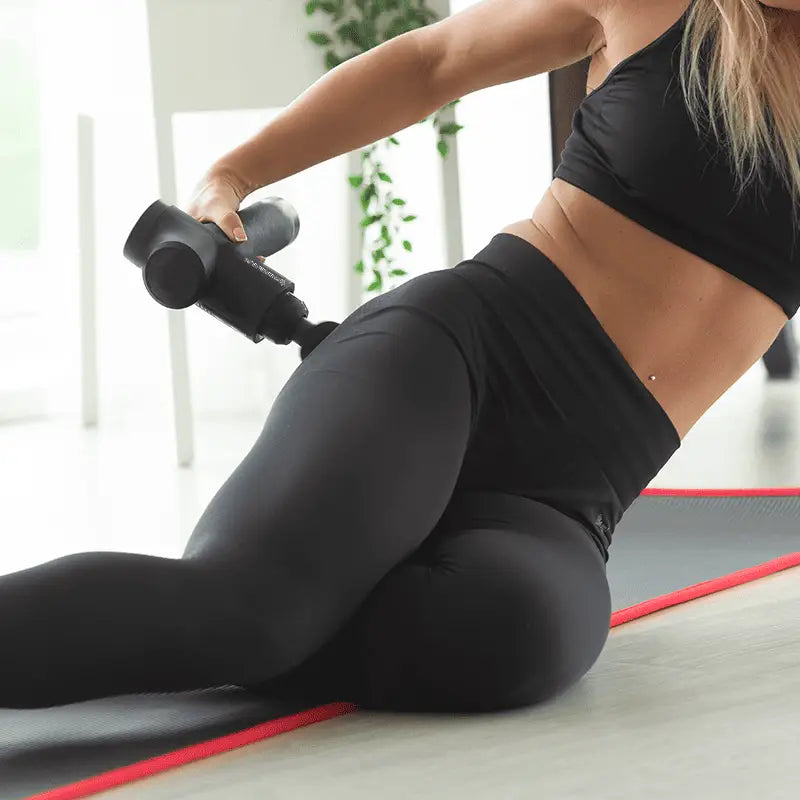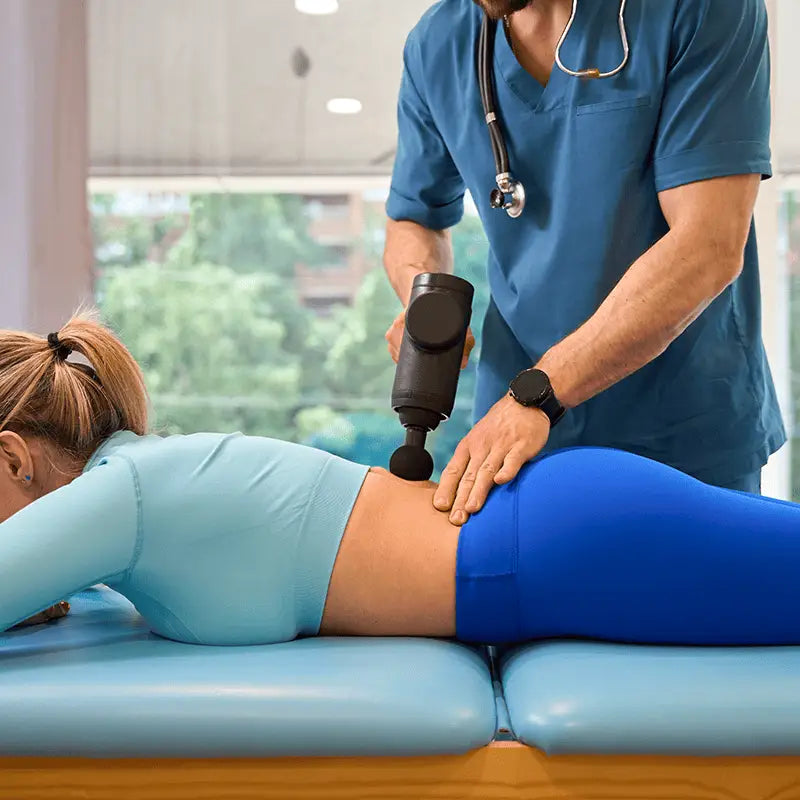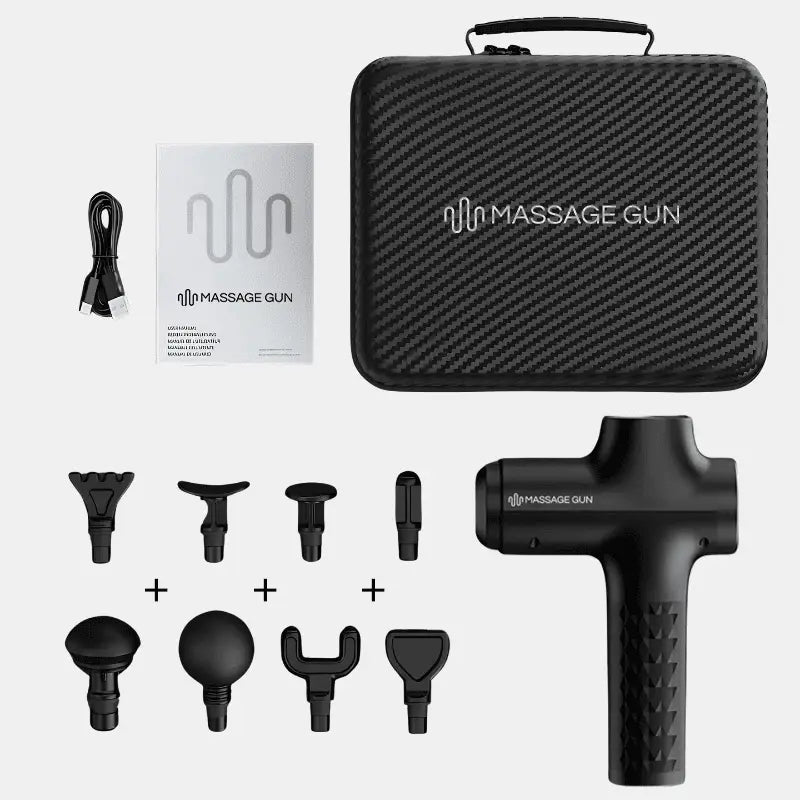Massage guns have gained significant popularity in recent years as essential recovery tools for fitness enthusiasts and athletes. A massage gun, or percussion massager, is a handheld device designed to deliver rapid bursts of pressure, known as percussion therapy, to treat sore muscles and relieve muscle stiffness.
Understanding what a massage gun does is essential for people looking to enhance their recovery routines, improve mobility, or simply alleviate discomfort.
These devices are specifically designed to target tight muscle groups, improve blood circulation, and promote faster recovery times after physical activity. In this article, we will discuss the science behind massage guns, their benefits, potential drawbacks, and practical tips for effective use.
The science behind massage guns
How do massage guns work?
Massage guns utilize percussive therapy to deliver rapid pulses of pressure to the muscles. This therapy works by creating vibrations that stimulate soft tissue and penetrate deep into muscle fibers, promoting increased blood flow and oxygen delivery to targeted areas.
The mechanism is based on the principle that rhythmic pressure helps to break down knots, relieve tightness, and improve lymphatic fluid movement within the body.
By applying varying speeds and intensities, these devices effectively stimulate muscle fibers, resulting in enhanced recovery and reduced soreness. Visual Element: A diagram illustrating the working mechanism of a massage gun can help readers visualize how these handheld devices operate.
The role of muscle fibers in massage therapy
Muscle fibers play a crucial role in how massage guns function. When you use a massage gun, the vibrations stimulate muscle fibers, promoting their recovery after physical exertion. This stimulation not only boosts circulation but also helps in decreasing scar tissue and improving the overall movement of fluid in the lymphatic system.
Increased blood flow can aid in reducing lactic acid buildup, a common cause of muscle soreness after intense workouts. Scientific Source: Evidence from the Journal of Sports Physical Medicine has shown that vibration therapy can enhance muscle recovery by reducing delayed onset muscle soreness (DOMS). Linking to relevant studies will provide readers with credible information to support these claims.
Benefits of using a massage gun
Pain relief and muscle recovery
One of the primary benefits of using a massage gun is its ability to relieve pain and promote muscle recovery. Professional athletes and active individuals often experience muscle soreness that can hinder performance.
By utilizing percussive therapy, a massage gun can effectively treat muscle tightness and enhance the recovery process, allowing users to get back to their routines sooner. Moreover, many people report that using a massage gun pre- or post-workout leads to improved athletic performance and reduced muscle stiffness.
Enhanced flexibility and range of motion
Massage guns are also known for their ability to improve flexibility and increase range of motion. By applying targeted pressure to specific muscle groups, these devices can help loosen tight muscles and connective tissue, making it easier to achieve greater mobility.
Regular use of a massage gun can be particularly beneficial for those involved in sports or physical activities that require a full range of motion. This improvement in flexibility can help prevent injury and enhance overall athletic performance.
Stress relief and relaxation
In addition to physical benefits, massage guns offer significant mental health advantages. The rhythmic pressure and vibrations can help induce relaxation, reducing stress and anxiety levels.
When muscles are relaxed, it creates a positive feedback loop, as reduced tension can lead to lower cortisol levels, the stress hormone. Users often report feeling more relaxed and rejuvenated after using a massage gun, contributing to overall well-being.
Potential drawbacks of massage guns
Risks of improper use
While massage guns can be highly beneficial, improper use can lead to potential harm and injuries. One of the most common mistakes is applying too much pressure, which can result in bruising or muscle damage. It's essential to use the device safely, avoiding sensitive areas, such as bones and joints. Additionally, users should be aware of their body’s response during and after use, as overuse can lead to soreness rather than relief.
| Safe usage practice | Description |
|---|
| Read the manual | Thoroughly read the instruction manual to understand features and limitations before using. |
| Start with the lowest speed | Begin with the lowest speed setting and gradually increase as you become comfortable. |
| Use appropriate attachments | Select the right attachment for each muscle group. Softer for sensitive areas, firmer for large muscles. |
| Avoid bony areas | Do not use the massage gun directly on bones, joints, or thin skin over bones (spine, knees, elbows). |
| Limit usage time | Avoid using the massage gun on the same area for more than 1-2 minutes to prevent bruising or soreness. |
| Maintain a light pressure | Apply gentle pressure; let the device work. Pressing too hard can cause muscle or tissue damage. |
| Stay clear of injured areas | Do not use on open wounds, bruises, inflamed areas, or injuries like muscle tears or sprains. |
| Consult a professional | If unsure about usage or with existing medical conditions, consult a healthcare professional first. |
| Hydrate before and after Use | Drink water to help with muscle recovery and reduce soreness. |
| Avoid usage near the neck or head | Steer clear of sensitive areas like the neck and head to prevent nerve damage. |
| Listen to your body | Stop use immediately if you feel sharp pain or discomfort. It should relieve tension, not cause pain. |
| Monitor battery levels | Ensure the massage gun is adequately charged to avoid sudden stops during use. |
| Keep out of reach of children | Store the massage gun safely to prevent accidental misuse by children. |
Limitations of massage gun therapy
Despite their advantages, massage guns have limitations. They may not be effective for certain conditions, such as severe injuries or chronic pain syndromes. In these cases, seeking professional medical advice is advised. Furthermore, while massage guns can provide temporary relief, they are not a substitute for traditional physical therapy.
Users should be aware of when to consult a healthcare provider, especially if they experience persistent pain or discomfort. Expert Opinion: Insights from a sports medicine professional can clarify when it is essential to seek help rather than rely solely on massage gun therapy.
Practical tips for using a massage gun
How to choose the right massage gun?
Choosing the right massage gun can significantly impact its effectiveness. Key features to look for include battery life, speed settings, and attachment heads that target different muscle groups. Some percussion massagers come equipped with specialized attachments designed for specific areas, such as the back, neck, or legs.
It's essential to select a model that meets your individual needs and preferences. Infographic: A visual comparison chart of popular massage guns will help readers make informed decisions when purchasing.
How to properly use a massage gun?
To maximize the benefits of a massage gun, users must learn how to use it effectively. A step-by-step guide detailing effective techniques can be very helpful. For instance, it's recommended to start with a lower speed setting, gradually increasing the intensity as muscles warm up.
Focus on major muscle groups for about 1-2 minutes each, allowing for proper recovery. Online Tool: An interactive guide or app that provides personalized massage gun routines can enhance user engagement and promote safe practices.
Conclusion
In conclusion, massage guns offer a range of benefits, from pain relief and muscle recovery to enhanced flexibility and stress reduction. However, understanding their limitations and using them correctly is crucial to avoid injuries and maximize their effectiveness.
By following the practical tips outlined in this article, users can safely integrate massage guns into their wellness routines. Call to Action: We encourage readers to share their experiences with massage guns or ask questions about their use, fostering a community of informed individuals eager to explore the advantages of percussive therapy.
Frequently asked questions
1. What is a massage gun?
A massage gun is a handheld device designed to deliver percussive therapy massage, which provides deep tissue massage. It offers numerous benefits, including improved muscle recovery and enhanced athletic performance.
By using rapid bursts of pressure, a massage gun stimulates blood vessels and nerve endings in targeted areas, helping to relieve muscle pain and discomfort. Unlike foam rollers or other massagers, a percussion massage gun can penetrate deeper into muscle tissue, making it effective for both warm-up and post-workout recovery.
2. How does a massage gun work?
Massage guns work by utilizing a powerful motor that drives a massage head to create rapid, percussive movements. This action provides therapeutic stimulation to the muscles, helping to boost circulation and improve blood flow to the area.
As the massage gun works, it aids in reducing muscle stiffness and increasing mobility, which is crucial for injury prevention. The scientific benefits of this type of massage therapy are supported by literature reviews published in international journals that highlight its effectiveness for athletes and fitness enthusiasts.
3. What are the benefits of using a massage gun?
Using a massage gun can lead to significant benefits, including reduced muscle soreness, improved flexibility, and enhanced overall muscle strength. Regular use can help relieve sore muscles, especially after intense workouts, and aid in reducing stress.
The therapeutic effects of percussion therapy massage are particularly effective for professional athletes and fitness enthusiasts who want to maintain their physical activity and endurance. Many users find that incorporating a massage gun into their routine adds to their injury prevention strategies, allowing them to train more effectively.
4. When should I use a massage gun?
You can use a massage gun both before workouts as a warm-up tool and after exercise for recovery. Prior to exercising, it helps prepare the muscles by increasing blood flow and loosening tight spots, which can enhance performance.
After workouts, using a massage gun can relieve sore muscles, reduce lactic acid buildup, and promote quicker recovery. The proper usage of the device during these times ensures that you maximize its benefits while minimizing the risk of injury, allowing for a more effective workout routine.
5. Can a massage gun help with injury recovery?
Yes, a massage gun can assist in injury recovery by improving circulation and promoting muscle relaxation. The targeted deep tissue massage can help break down scar tissue and reduce muscle tightness, which is essential for rehabilitation.
While it can be effective in relieving discomfort, it’s important to consult a certified professional massage therapist or healthcare provider for guidance. They can provide tailored advice on proper usage and help determine the best approach for your specific injury to ensure safety and effectiveness.
6. How do I use a massage gun effectively?
To use a massage gun effectively, start with a proper warm-up by selecting a low setting and gradually increasing the intensity. Focus on specific muscle groups, applying the massage head to the targeted spot for 1 to 2 minutes.
Avoid using the device on bony areas and be cautious of applying too much pressure. Integrating foam rolling into your routine can also enhance the effects of the massage gun. Always listen to your body to prevent overuse and ensure that your muscles respond positively to the treatment.
7. Are there any risks associated with using a massage gun?
While massage guns are generally safe, improper usage can lead to potential harm, such as bruising or exacerbating existing injuries. It's crucial to be mindful of your body's signals and avoid using the device on sensitive areas or injuries.
To maximize safety, consult a board-certified physical therapist or follow guidelines provided by experts. Make sure to read the manual and understand the specific safety precautions, especially when considering the integration of massage gun therapy into your recovery routine.
8. How long should I use a massage gun?
The recommended duration for using a massage gun is typically 1 to 2 minutes per muscle group, allowing enough time to experience its benefits without overdoing it.
Most sessions should last between 10 to 15 minutes total, depending on the number of areas you target. If you're working on a particularly tight spot, you may spend a bit longer there. Always be cautious to avoid overstimulation, as the goal is to enhance muscle recovery without causing additional muscle pain.
9. Can I use a massage gun daily?
Yes, many people can safely use a massage gun daily, especially if they engage in regular physical activity. Daily use can help maintain muscle flexibility and prevent stiffness, improving overall performance.
However, it's essential to listen to your body and allow adequate rest for specific muscle groups, particularly after intense workouts. Proper usage and frequency should be adjusted based on individual recovery needs, ensuring that the benefits of massage do not lead to overuse injuries.
10. What should I look for when buying a massage gun?
When purchasing a massage gun, consider the motor power, speed settings, battery life, and included attachments. A powerful motor is crucial for delivering effective percussion therapy and targeted deep tissue massage. Look for multiple speed options to customize your experience, as well as various attachments designed for different muscle groups.
Additionally, check for features that enhance digital security and ease of use, such as a lightweight design for portability and convenience. Reading customer reviews and expert recommendations can also help guide your decision in choosing a reliable device.


